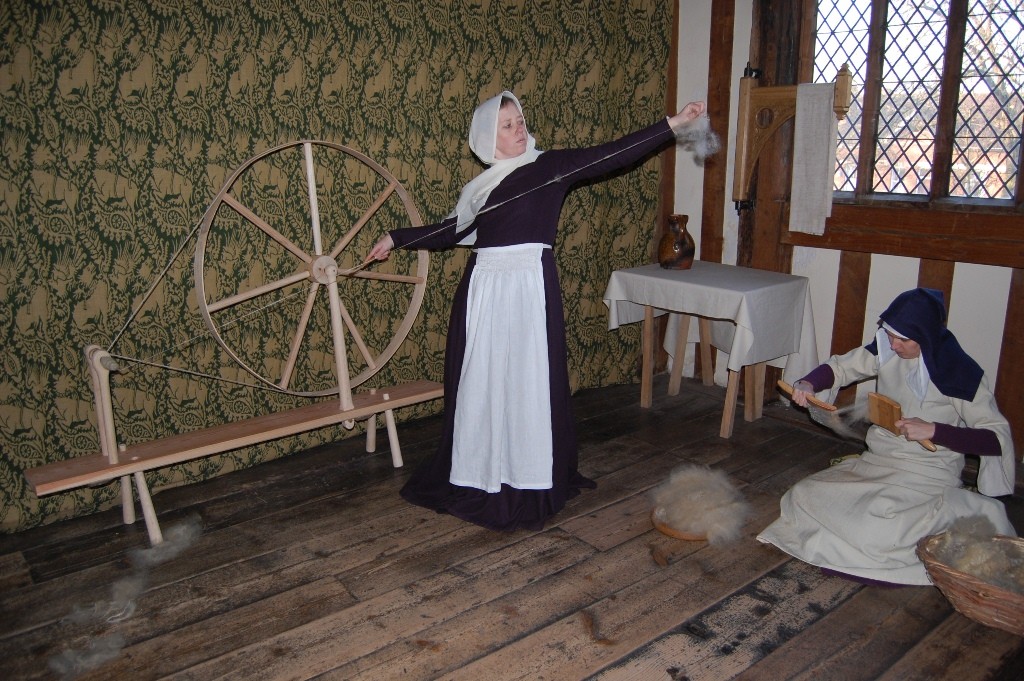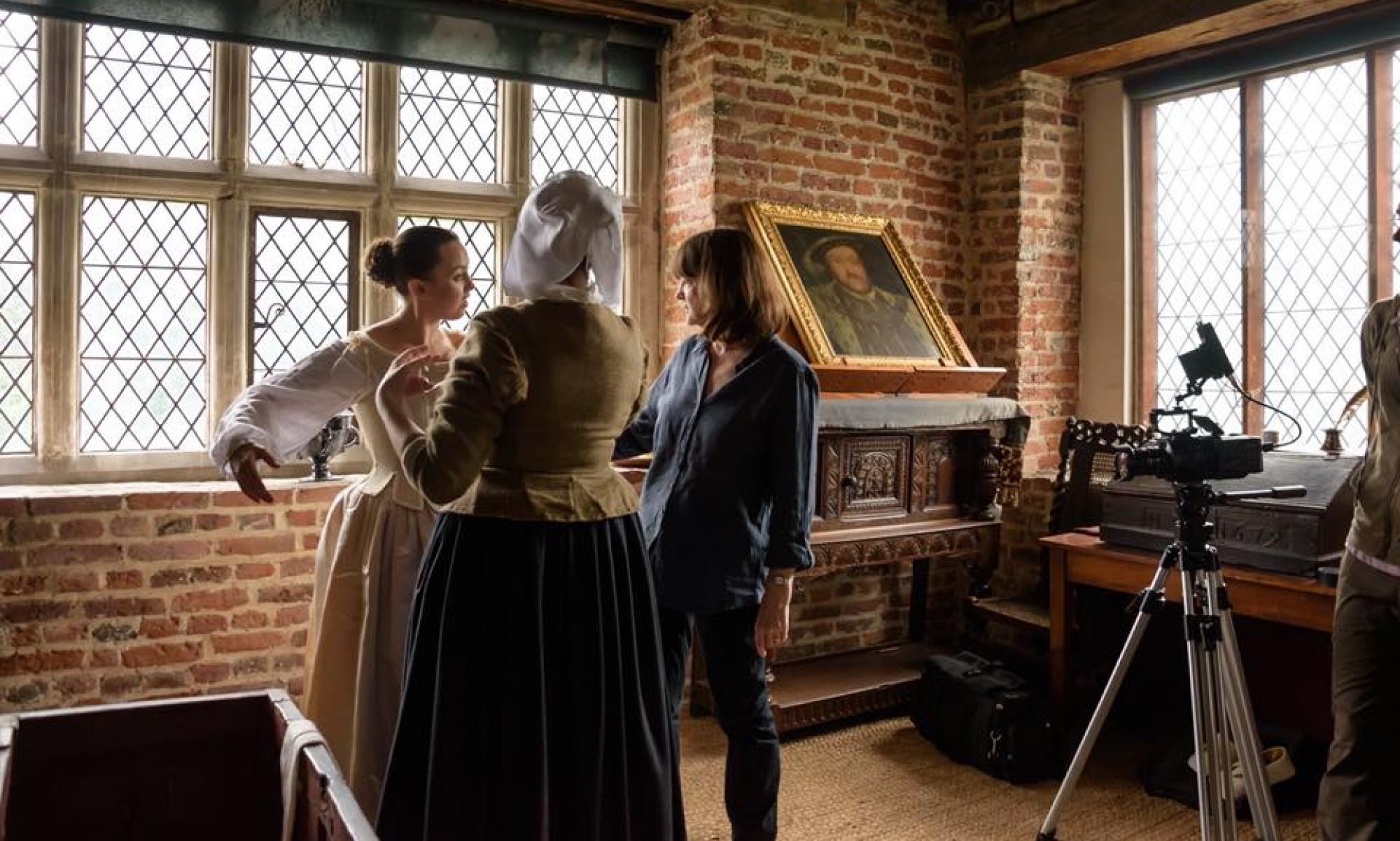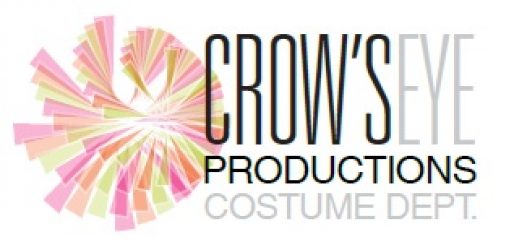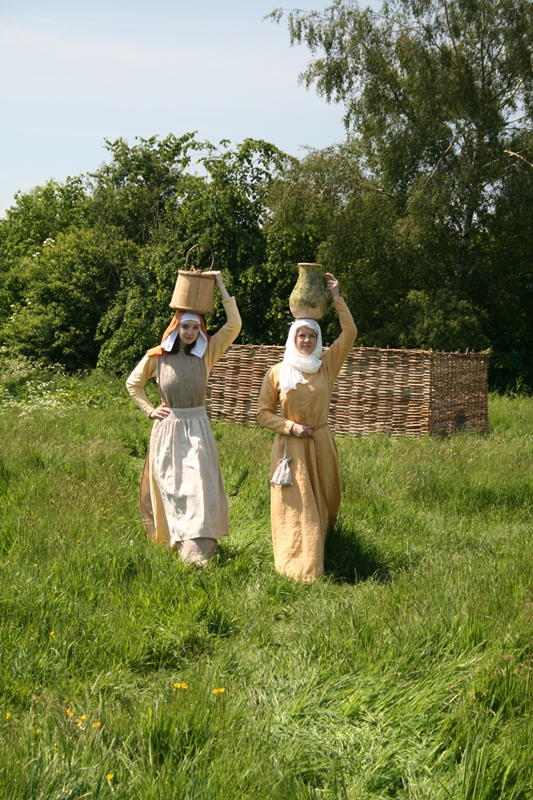The Luttrell Psalter is a medieval manuscipt which was created around 1325-1340 for a Lincolnshire Lord. In 2006/2007 I co-produced and costumed a filmed dramatisation of the images of everyday medival life in the Luttrell Psalter film, many of which take the form of comic sketches. We took the decision early on in the process of making the Luttrell Psalter film, and in consultation with The Collection (the museum in Lincoln for whom the film was made), to reproduce recognisable images from the Psalter rather than to reinterpret them.
The museum wanted the people from the Psalter images to ‘walk off the page’. We too felt that any deviation from the images was to move away from the primary source and so we worked hard to recreate the world that Sir Geoffrey created for posterity, rather than to reimagine it as we think it should have been. here is a gallery of pictures taken during filming – you might recognise one or two:
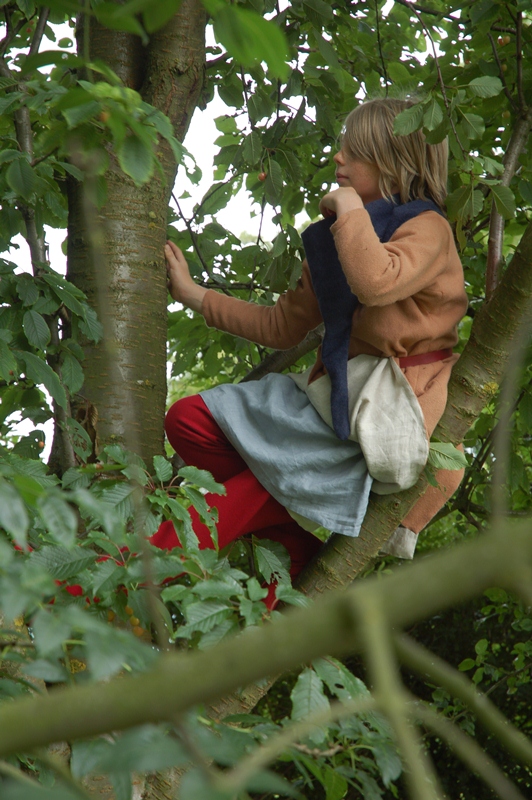
You can view the Luttrell Psalter Film on our Crow’s Eye Productions Youtube Channel:
Costume
We took the decision early on in the process of making the film, and in consultation with The Collection (the museum in Lincoln for whom the film was made), to reproduce recognisable images from the Psalter rather than to reinterpret them. The museum wanted the people from the Psalter images to ‘walk off the page’. We too felt that any deviation from the images was to move away from the primary source and so we worked hard to recreate the world that Sir Geoffrey created for posterity, rather than to reimagine it as we think it should have been.
The Vexed Question of Colour – would a swineherd really have worn purple? We were aware that the illustrator was working with a painter’s palette, not a dyer’s one, and would have had a different range of colours available to him – he was also creating a decorative work. With this as a consideration, we strove hard to find textiles in colours that looked believable and achievable for the period, but matched the images. We also had a very small budget. We resorted to dyeing the fabrics ourselves or dipping them in a weak solution of potassium permanganate to dull the modern dye colours down. However, we did not break down the clothing to make them look worn and grubby as this would be reinterpreting the images.

The period over which the Psalter was created – 1325-1340 (approx.) – was a period during which the cut of clothing began to change. Since textiles were first created, clothing was made by first tying, then pinning, then sewing rectangles of fabric together. Textiles are a product of farming – from the fibres (linen/flax – wool/sheep) to the plants needed for dyeing them. A complete farming year goes into the production of the raw material, this then need to be harvested, cleaned/prepared, spun into yarn and woven into cloth. So you can appreciate that the value of textiles was such that, when they were cut to form a garment, they were cut without waste. This was achieved by using simple geometric shapes – rectangles, triangles and squares ingeniously pieced to create fit and fullness. However, a radical change in the cut of dress in this period is happening around this time. It begins with the armhole; instead of creating sleeves t-shirt wise, they begin to fit the sleeve closer to the arm and into a shaped armhole. This frees the arm movement and allows the arm to be raised without the garment pulling up. As a result, garments could then be tailored to fit the figure without restricting movement.
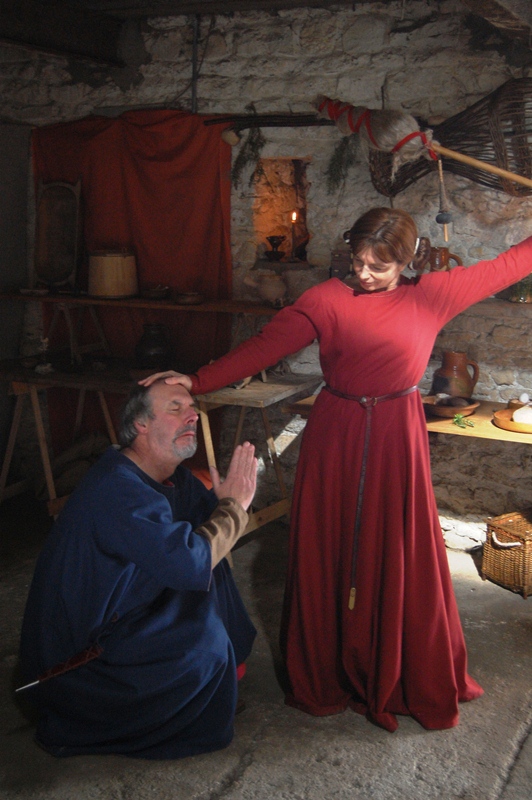
As we studied the Psalter images we could see that many of the garments had tight sleeves, but were otherwise loose fitting – however no seams were shown. So we looked at archaeological evidence, tomb monuments (which do often show seams) and trial tested garments comparing them with the Psalter images for the correct fit and drape. As a result we decided that Psalter clothing shows a variety of cuts from simple rectangles to fully fitted, but that most of the villagers were gowns showing shows a transitional cut – with fitted sleeves into a simply shaped armhole, but with the remainder of the garment formed from the rectangles and gores with some limited shaping.
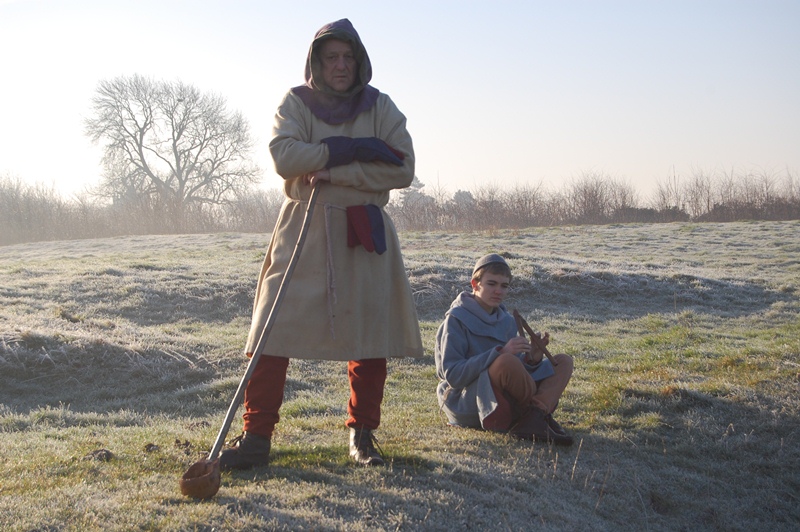
Higher Status Clothing
No means of fastening is shown on any of the women’s gowns, and indeed most clearly simply slip over the head. However, the dress worn by the lady spinning (below) with the great wheel is an exception. Her gown is fitted so closely to her figure that it must include sophisticated tailoring and must be laced closed to achieve such a tight fit.
